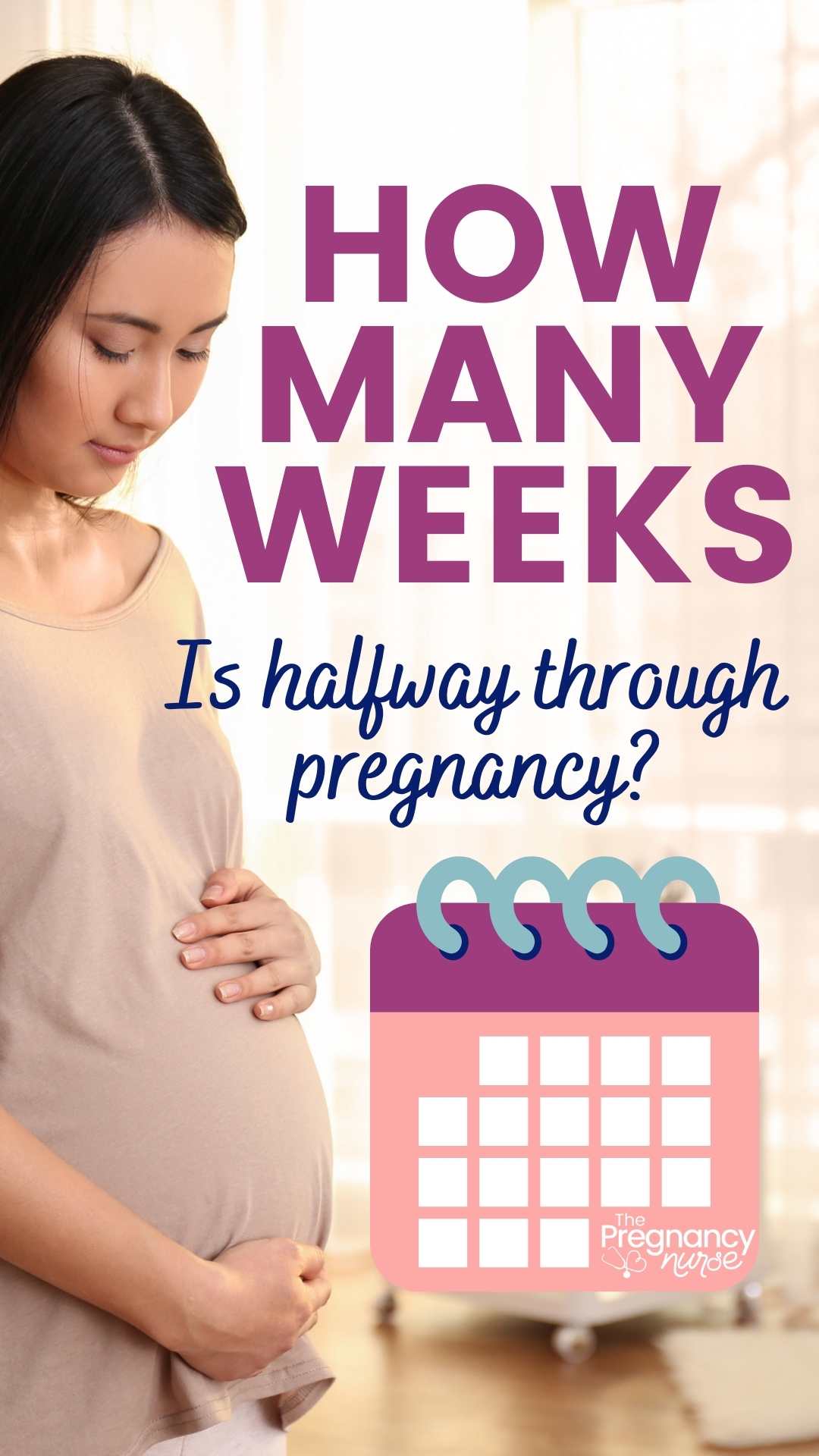As any mom knows, pregnancy is a special time in a woman’s life. But how do you know when you’re halfway through? Most expectant mothers want to know how long they have left to go. Luckily, there is a fairly simple way to calculate this. In this blog post, we will explain the formula for finding out how many weeks pregnant you are at the midway point. We will also provide some tips on staying healthy and comfortable during these final weeks. So read on to learn more!
But first, how do I know all of this?
Hi, I’m Hilary — The Pregnancy Nurse 👩⚕️. I have been a nurse since 1997 and I have 20 years of OB nursing experience, I am also the curly head behind Pulling Curls and The Online Prenatal Class for Couples. 🩺 I have also had 3 babies of my own and I know HOW IMPORTANT it is to know what’s going on when. Right?
Before we get going, come join me in my pregnancy series tailored JUST to where you are:
How is pregnancy measured?
Pregnancy is usually measured from the first day of the last menstrual period. This is because it is often difficult to know exactly when conception occurs. Some healthcare providers may measure pregnancy from the time of ovulation, rather than from the first day of the last menstrual period. This is because ovulation usually occurs about two weeks after the last menstrual period.
Related: My Pregnancy Calculator
Pregnancy is divided into three main stages:
The first stage, known as the first trimester, starts on the first day of your last period and lasts until week 12.
The second stage, called the second trimester, begins at week 13 and lasts until week 26.
The third stage, known as the third trimester, starts at week 27 and ends when you give birth.
Your pregnancy is considered to be full-term at week 37, although they prefer babies to be born after 39 weeks when possible.
How Many Weeks is Halfway Through Pregnancy
The halfway point of pregnancy is around Week 20.
How many weeks of pregnancy are there?
There are about 40 weeks of pregnancy (so, half of that would be 20).
How are your weeks of pregnancy measured?
Weeks of pregnancy are measured from the first day of your last menstrual period.
At what day during pregnancy do you normally get pregnant?
The average person gets pregnant at about two weeks after their last period.
So, if I’m really not PREGNANT until week 2, and I can’t even find OUT til’ around week 4-5 — what’s the real halfway point.
Probably around 22 weeks.
Which, frankly — is an awesome time to start this.
What to expect in the coming weeks?
At 20 weeks of pregnancy, you will have your anatomy scan (although some places do it sooner). This is a detailed ultrasound scan that will check the development of your baby . You may also find out the sex of your baby at this scan.
I actually chatted with my friend all about this on my podcast on routine pregnancy ultrasounds:
You may start to experience physical symptoms such as headaches, feeling faint or hot, sickness and indigestion. Your baby is about the size of a coconut and is about one pound in weight.
What happens at 22 weeks of pregnancy?
At 22 weeks of pregnancy, your baby is about the size of a coconut and is about one pound in weight. You may feel like you are connecting with your baby as their movements become stronger. You may also have some physical symptoms of pregnancy, such as headaches, feeling faint or hot, sickness and indigestion.
What is the average weight of a baby at 20 weeks pregnant?
The average weight of a baby at 20 weeks pregnant is about one pound.
How Can You Prepare for Childbirth at 20-22 Weeks of Pregnancy?
During your second trimester, you should start preparing for childbirth. This includes attending antenatal classes, reading about childbirth, and discussing any concerns you have with your healthcare provider. You may also want to start practicing relaxation techniques or deep breathing exercises. These can help you during labor and delivery.
Now is actually a GREAT time to get started. I love online courses because you can take them on your own timeline (this one has a lot of good info on 3rd trimester testing, which – if necessary – will just be a few weeks away) and can always review it. That class:
- Can be done in just a few hours
- Comes at a few price points to fit your needs/budget
- Is taught by a highly experienced L&D nurse.
Have you checked a birth class off your to do list✅? I have a few I recommend:
❤️ Best class for couples {per BabyList}
👩💻 Best class available on demand
⚡ Best class JUST for pain management
👶 Best Postpartum-Only Prep
❤️🧡💛💚💙💜 My favorite class is here.
Now is the time to get started!
Want to do a vibe check before diving into the whole thing with me? — check out my free labor pro tips. It’s your first step toward getting in the driver’s seat of your birth.






 What to Do When Your Epidural Doesn’t Work
What to Do When Your Epidural Doesn’t Work
